The first step was to build a prototype as a first PoC, to verify that the concept works (it adds up on paper, but generating electricity from microbes living in moss is incredible!). So I went to pick up moss nearby and built an experimental setup similar to this build.
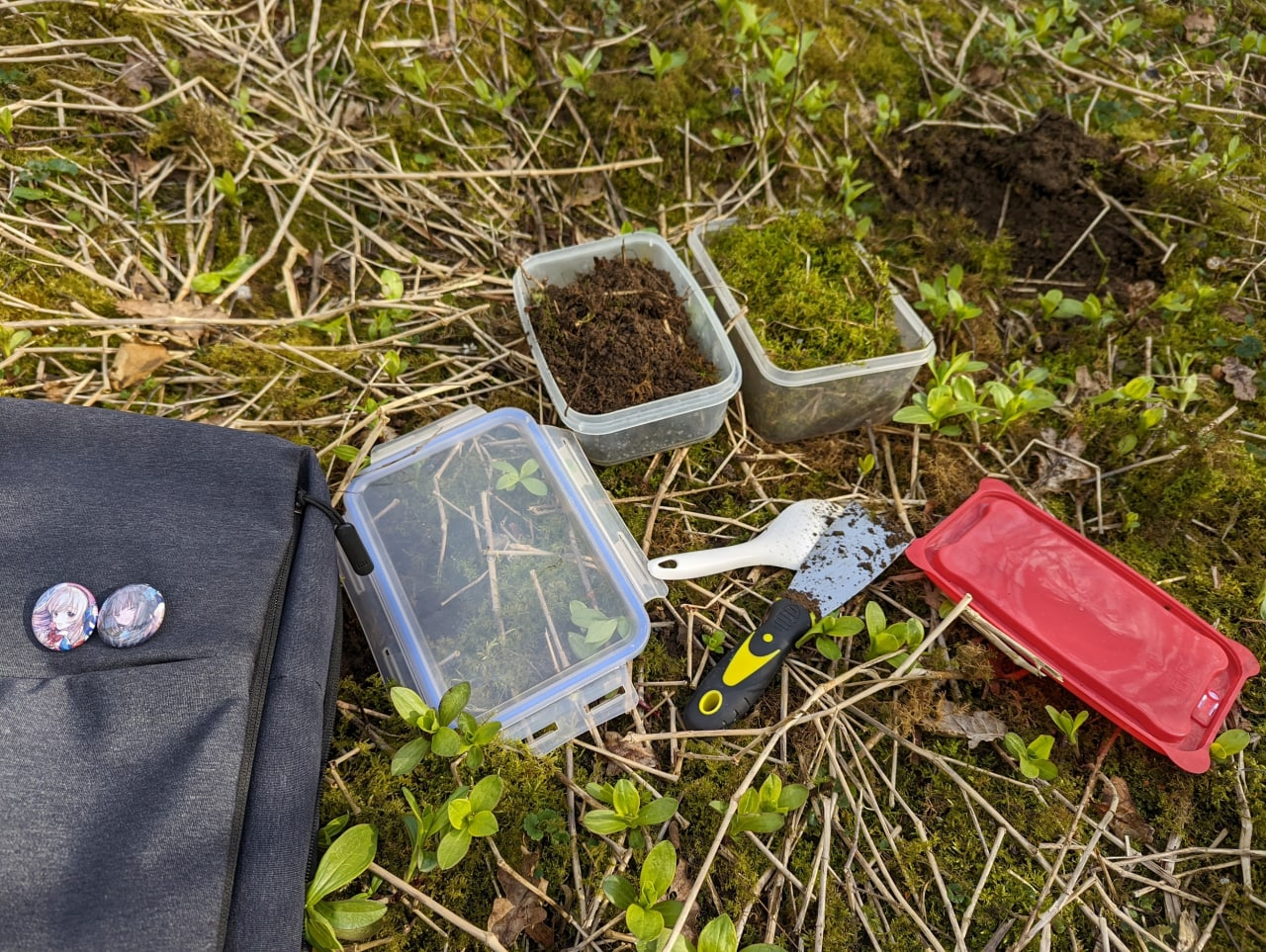
The build consist of a plastic container, a lining of aluminium foil at the bottom as a cathode, a layer of soil, another layer of aluminium foil as anode, and then a bit of soil and the moss. Here is what it looks like:
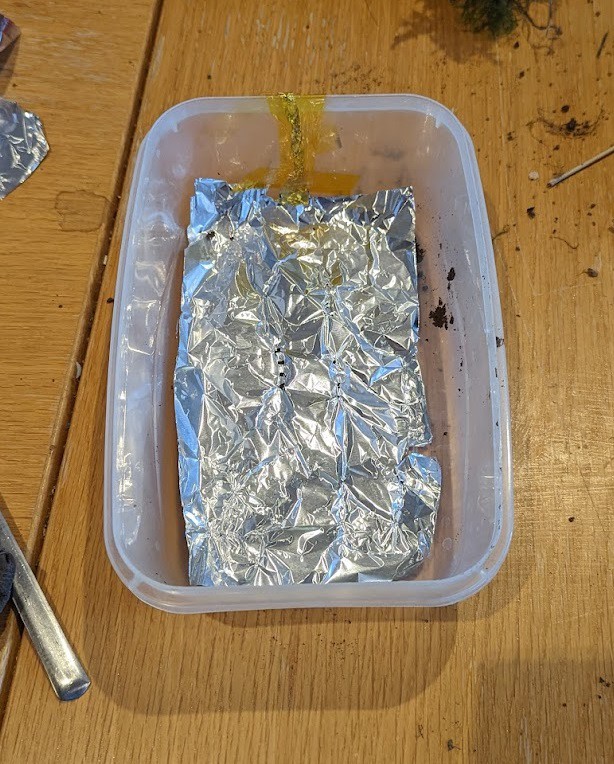
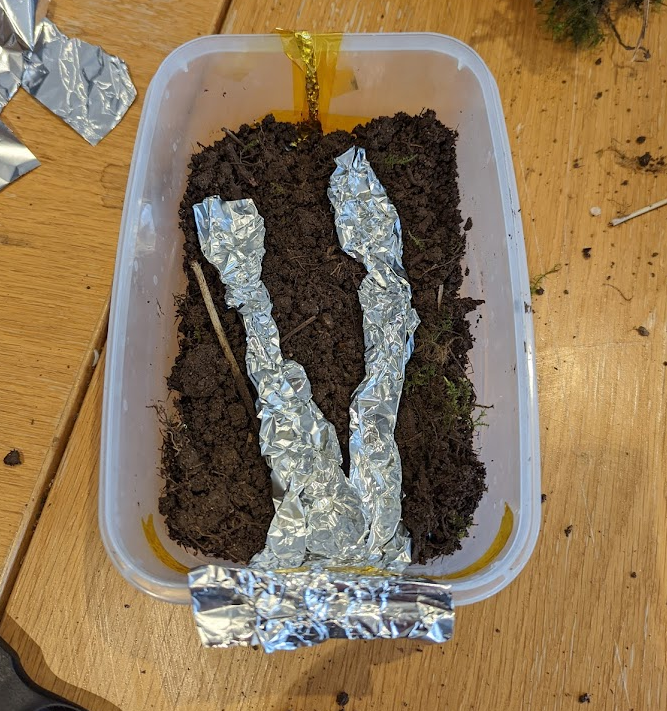
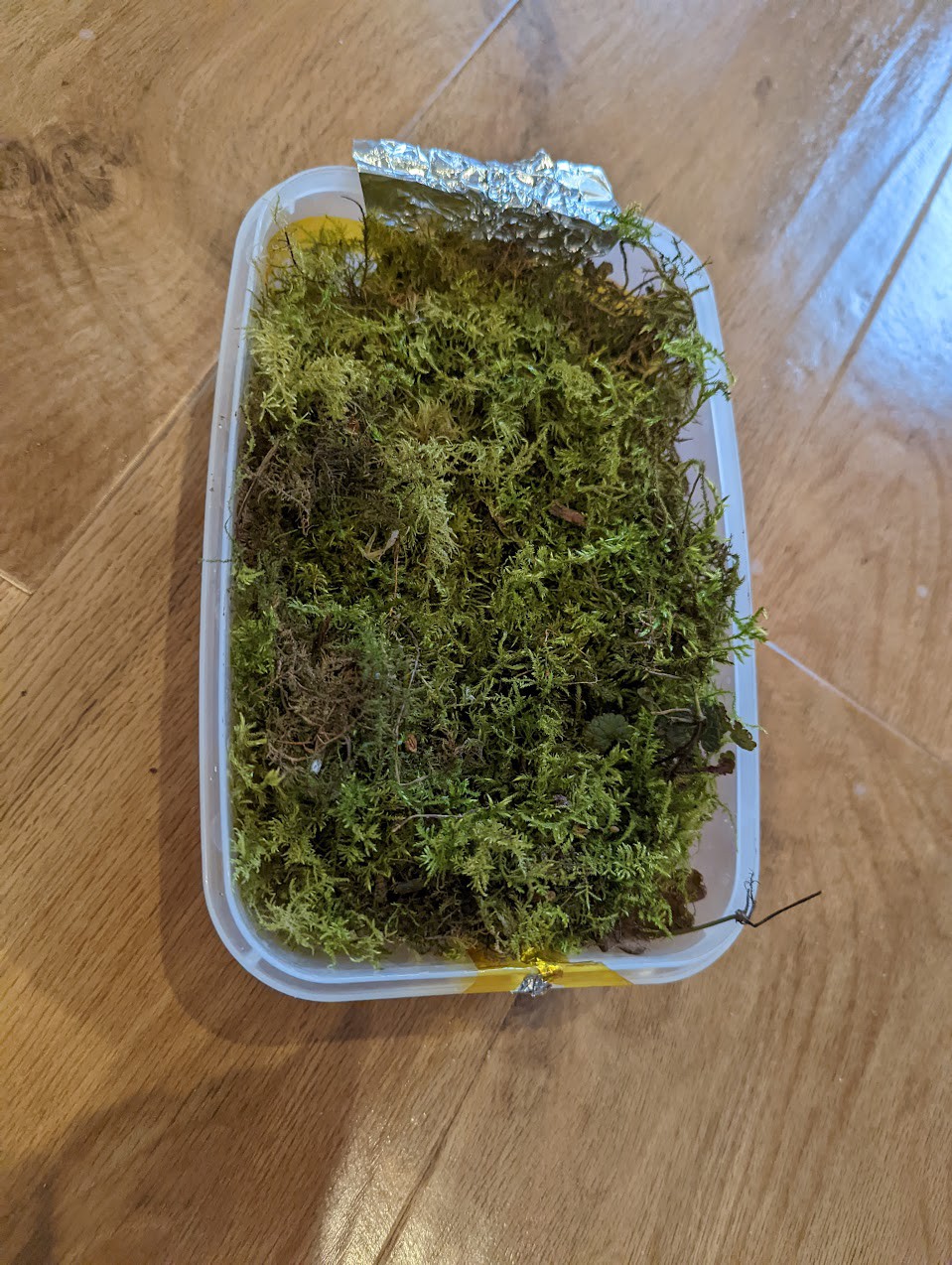
And then build a second on for control
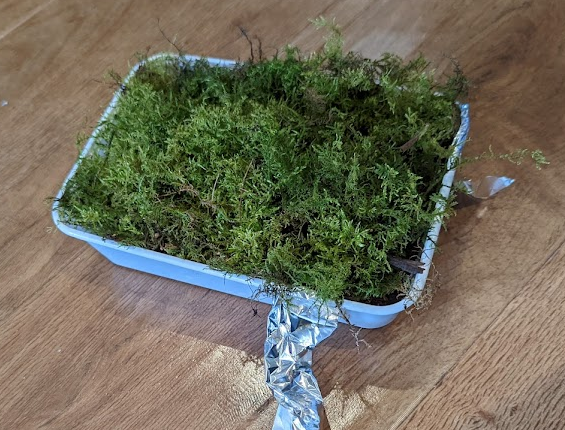
I monitored the voltage I could get on the 2 fuel cells over a few days, as expected it took a bit of time to settle, here are the highest voltage measured on them on each day:
| Cell 1 | Cell 2 | |
| Day 1 | 41mV | 16mV |
| Day 2 | 79mV | 20mV |
| Day 3 | 131mV | 32mV |
| Day 4 | 141mV | 24mV |
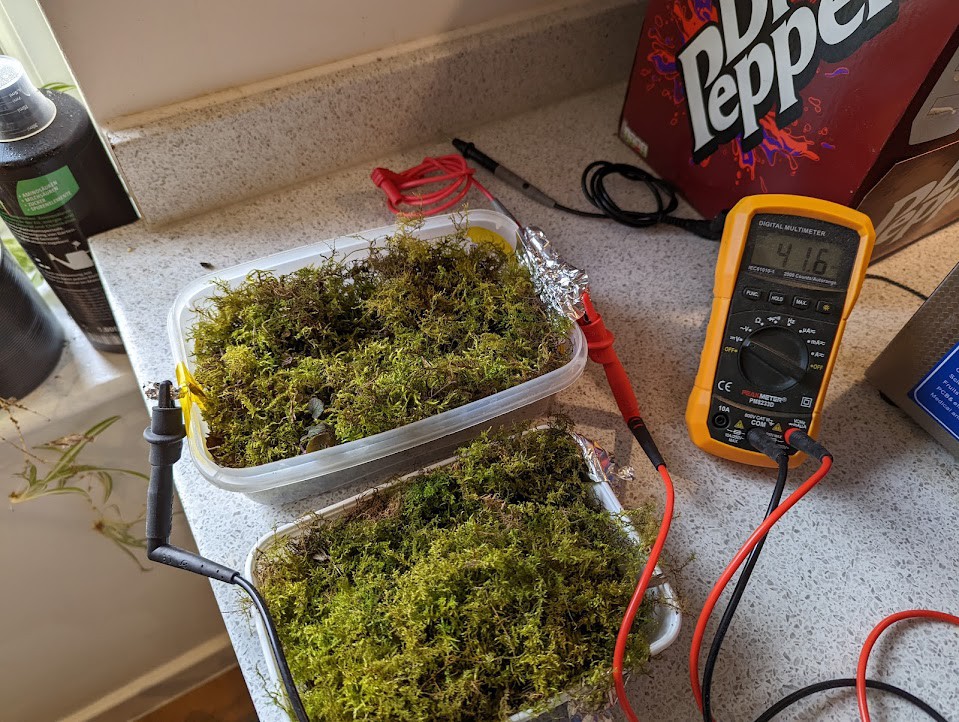
Note this is just the voltage - not the power, although in the case of microbial fuel cells they are often proportional. Further testing seems to confirm that cell 2 is underperfoming.
Next time!
The next step is to find a way to harvest the very low power electric charge and design a better container and set of anode and cathode~
 Guru-san
Guru-san
Discussions
Become a Hackaday.io Member
Create an account to leave a comment. Already have an account? Log In.